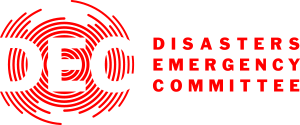
ResourceSpace has changed the way the DEC uses content, making it much easier for us to quickly make assets available both internally and externally during our emergency appeals.
Blog
3rd March 2023

There's a good chance that at some point you've heard about Digital Asset Management and Brand Asset Management, and wondered: "Is there a difference?"
DAM and BAM certainly sound similar. After all, brand assets can be digital, and digital assets can be brand-related.
However, there are some key differences between the Brand and Digital Asset Management definition that you should be aware of.
Brand Asset Management is a software solution for managing branded assets, and where teams can collaborate on brand-related projects. BAM makes it easy to store and share branded digital assets.
A BAM system (or DAM system that supports brand management) allows organisations to maintain a consistent brand presence across every touchpoint and channel. A BAM or DAM manager will closely control which assets are available and which teams can access those assets, helping to avoid incorrect or outdated assets being used.
And this matters. Research has shown that brand consistency can increase revenue by 33%.
A branded asset could be any type of file, image or document that showcases the brand of your business. Most commonly, branded assets include:
Brand Asset Management is important because your brand is important. Your brand is the cornerstone of your organisation, and it should be a top priority for your business.
A good Brand Asset Management system ensures that you can easily develop and manage your brand, and takes the hassle out of storing and sharing digital brand assets.
It can help you stop the wrong logo being used on the wrong background. It can help you keep branding consistency across your digital advertising. And it can help you ensure all types of communication always contain a reference to your brand.
If you want to maintain your brand guidelines, ensure your brand is always displayed to the highest standards and prevent assets from being used incorrectly, you need a strong Brand Asset Management system.
The first thing to mention is that you don't need a dedicated Brand Asset Management system if your Digital Asset Management platform can support BAM - which we'll talk about shortly.
The key differences are clearer when comparing a dedicated BAM with a DAM system.
Unlike Digital Asset Management which typically holds far more assets, in various forms and different stages of completion, a BAM is often used exclusively to store curated collections of final assets. For example, a DAM might hold every version of an organisation's brand logo, going right back to the inception of the company. By contrast, a BAM would only store the latest version of the logo.
Ultimately, a BAM is central to brand workflows and designed for the specific purpose of managing your brand, while a DAM meets a much wider range of requirements.
There are also some key similarities between BAM and DAM:
There's a key question that needs answering though: do you need separate BAM and DAM systems?
Being swamped in an unorganised and unstructured mass of digital content is no way to run a marketing department - and you need your best creatives working on projects that will have real impact on your brand awareness, rather than spending their time aimlessly searching for files, and worrying over how best to send and share something they've been working on with others who urgently need to view it. With professional Digital Asset Management (DAM) software, you can spend more time on brand management, and less time on stress management.
Here are our top five tips for using DAM to support your branding endeavours.
Creative employees need to be immersing themselves in pictures, words and big ideas… not admin. Without a DAM system to correctly archive and arrange your content, it's likely that the creative energy of your team is being drained by searching for the items they need, looking for long lost files in their email inbox, and trying to share their work with colleagues. With less menial tasks to complete, you can get on with being productive.
Within the central repository of a DAM system, you can produce outlines and instructions that you can be sure everyone will have access to, ensuring that your vision is being executed consistently by all workers. By producing brand guidelines, you can be sure that everyone is familiar with the dos and don'ts, tone of voice, and how the brand story should be told, whether they're working across social media, artwork, or campaign strategies… or in the finance office.
Many of those working for your organisation will need access to graphics, without having access to the graphic designer, or will need to send a letter with your logo without the slightest idea of how it is produced. With a DAM system, you can supply creative materials to non-creative workers, by providing easy access to standardised templates for items such as headers, documents, web and office tasks and newsletters. In this way, all members of the team can support the marketing effort with professionally branded materials, without having to create content themselves.
When you've created strong content, you need to be sure it's being used, and that it's not being undermined by the use of differing, out of date, or incorrect versions. With DAM, you can ensure that staff can only use approved and relevant material, so that you can control the items that are being used, and monitor their implementation.
Without a DAM system in place, it's hard to keep track of what marketing material has already been produced, and which digital assets currently exist. By using the right software, you'll have instant access to a smart overview of everything you own, so that you can reuse, repurpose and recycle great content you'd forgotten you had - allowing you to save money, time and staff resources on producing, or purchasing new branding content from scratch.
Although there are dedicated Brand Asset Management platforms out there, a BAM cannot replace a dedicated Digital Asset Management system.
With that in mind, the smartest investment is in a DAM that can also support brand management.
ResourceSpace provides all of the features required for managing your brand assets, without needing to invest in a separate BAM platform. You can strictly control who has access to which assets to ensure no one can use outdated brand collateral, while Featured Collections can be used to clearly store and promote the latest files.
We can demonstrate exactly how ResourceSpace manages brand assets during a free 30-minute demo. Alternatively, click below and launch your free ResourceSpace instance in seconds.
#BrandAssetManagement
#BrandConsistency
#BrandManagement
#MarketingTools
#IndustryNews
#BestPractice
#ResourceSpaceTips